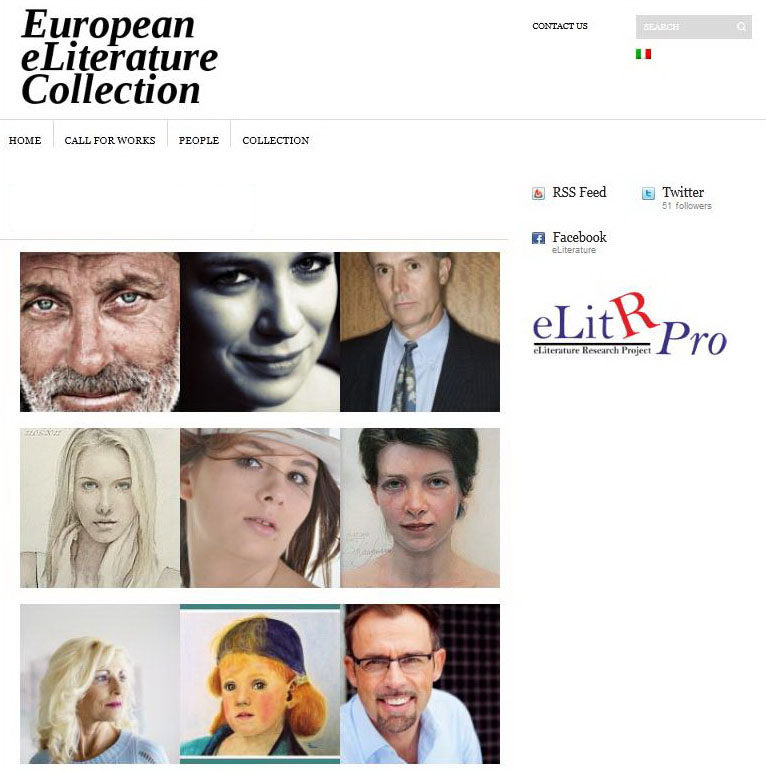Search
The search found 7 results in 0.009 seconds.
Search results
-
European eLiterature Collection
The European eLiterature Collection is a project developed as part of The eLiterature Research Project. The aim of the collection is to provide an essential tool to assist in formalizing e-Literature in Europe.
In this respect, the European eLiterature Collection Board of Editors, evaluates, reviews, and publishes on the web works of Electronic Literature by European authors.

Fabio De Vivo - 22.10.2011 - 12:16
-
Digital Magic: Preservation for a New Era
Kirschenbaum makes an "argument for the importance of digital preservation while describing how how he accessed SWALLOWS via an Apple // emulator and then provided Zelevanksy with the original .dsk file from which he then created a new version of SWALLOWS (with audio and video clips mixed in) called G R E A T . B L A N K N E S S" (Source: adapted from post at loriemerson.net).
Eric Dean Rasmussen - 25.04.2012 - 08:55
-
Porting E-Poetry: The Case of First Screening
This presentation seeks to examine issues around the practice of porting electronic literature,
particularly E-poetry by examining the case of First Screening by bpNichol, a Canadian poet who
programmed a suite of e-poems in Apple BASIC in 1984. This work was preserved, documented, ported, curated, and published in Vispo.com in 2007 by a collaborative group of poets and programmers: Jim Andrews, Geof Huth, Lionel Kearns, Marko Niemi, and Dan Waber. This publication consists of a curated collection of four different versions of First Screening which I will analyze in my presentation:1. The original DSK file of the 1984 edition, which can be opened with an Apple IIe emulator, along with the Apple BASIC source code as a text file, and scanned images of the printed matter
published with the 51/4 inch floppy disks it was distributed in.2. A video captured documentation of the emulated version in Quicktime format.
3. The 1993 HyperCard version, ported by J. B. Hohm, along with the printed matter of that
published edition.4. A JavaScript version of First Screening ported by Marko Niemi and Jim Andrews.
Eric Dean Rasmussen - 12.06.2012 - 12:27
-
Creative Material Computing in a Laboratory Context
Principles for organizing a laboratory with material computing resources are articulated. This laboratory, the Trope Tank, is a facility for teaching, research, and creative collaboration and offers hardware (in working condition and set up for use) from the 1970s, 1980s, and 1990s, including videogame systems, home computers, an arcade cabinet, and a workstation. Other resources include controllers, peripherals, manuals, books, and software on physical media. In reorganizing the space, we considered its primary purpose as a laboratory (rather than as a library or studio), organized materials by platform and intended use, and provided additional cues and textual information about the historical contexts of the available systems.
(Source: A technical report from The Trope Tank Massachusetts Institute of Technology 77 Massachusetts Ave, 14N-233 Cambridge, MA 02139 USA http://trope-tank.mit.edu)
Natalia Fedorova - 17.01.2013 - 18:42
-
Hardening Arteroids: Challenges in Creating a Critical Edition of a Born-Digital Work
Hardening Arteroids: Challenges in Creating a Critical Edition of a Born-Digital Work
Patricia Tomaszek - 13.10.2013 - 10:08
-
The Preservation of Complex Objects, Volume 2: Software Art
POCOS is an outward-looking and thoughtful project which addresses topics of significant complexity for the preservation of digital collections. Preservation is challenging enough for relatively well-understood and self-contained data types like images and documents but the digital estate is increasingly about sophisticated interactions and interdependencies between software, hardware and people. Our digital memory is growing in scale, our interactions with it are growing more sophisticated, and the ways in which elements are constructed are growing ever more subtle. So the challenge is not necessarily getting easier the more we know about it. Those concerned with safeguarding our digital legacy must never fall into the trap of constraining digital creativity - but nor should they be so complacent as to think they can afford to ignore change. Instead of waiting for inspiration to come through introspection or individual genius, POCOS invited, persuaded and cajoled many people to consider the transience of our digital heritage. Three symposia followed, on broad themes of visualisation, software art and virtual worlds.
Scott Rettberg - 04.11.2013 - 11:51
-
Make or Break? Concerning the Value of Redundancy as a Creative Strategy
There is a contradiction at the heart of digital art making, regarding its temporal mediality and relationship with a mainstream visual arts practice that values permanence. Why do we wish to preserve something temporal and fleeting? Will the preservation of digital works contribute to a process of commodification that many media artists have sought to avoid by embracing the ephemeral nature of digital media? Are there reasons that would justify preserving digital works of art when, for some artists, redundancy is a key principle in their practice?
(Source: Author's introduction)
Scott Rettberg - 04.11.2013 - 11:56

